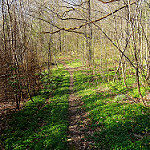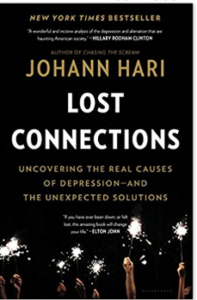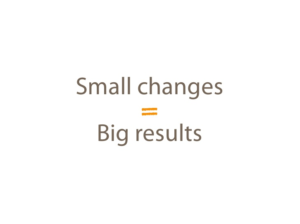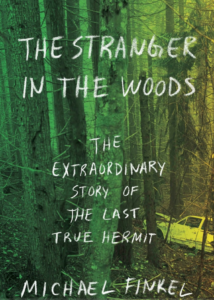While trudging over the snowy expanses of the North and South Poles and climbing to the rarified heights of Mount Everest, Norwegian explorer Erling Kaage discovered something unexpected. He discovered the subtle joy of silence.
“Silence in itself is rich,” Kagge told Natural Awakenings magazine. “It is a quality, something exclusive and luxurious, and also a practical resource for living a richer life. Silence is a deep human need that in our age, has ended up being scarcer than plastic bags from Louis Vuitton…”
It’s true. We live in an exceedingly noisy world filled with blaring horns, cell phone rings, leaf blowers and dripping faucets. Governmental agencies have long sought to reduce noise pollution, acknowledging the health hazards of so much clamor.

But silence isn’t just about the absence of environmental noise. It’s also about the silence that can be found within us and the delicate joy that emerges when we’re fully present with our moment-to-moment experience. Kaage says he walked alone for 50 days and nights in search of total silence, but he didn’t find it until he turned inward toward an inner silence.
For centuries, philosophers, psychologists and statesmen have praised the virtues of silence and personal reflection. Ben Franklin listed silence as one of his thirteen virtues. And the 16th century philosopher Blaise Pascal remarked: “All of humanity’s problems stem from man’s inability to sit quietly alone in a room.”
Taking time to be quiet – even for just two minutes – can be more relaxing than listening to music, according to a 2006 study published in the journal Heart. Research in mice has shown that silence also benefits the brain, regenerating cells within the hippocampus, which is important for learning and memory. Finland feels so strongly about the benefits of silence that the country’s convention bureau created a “silence” marketing campaign designed to entice world-weary travelers searching for peace and quiet. The campaign features images of still lakes with the tagline: “Silence, Please.”
Yet, many of us, like proverbial moths to the flame, are drawn to the noise of our busy, digitally connected lives. So much so that we’d rather receive an electric shock than sit in a room alone with our thoughts. That’s what University of Virginia researchers discovered when they conducted an experiment offering study participants that very choice. Shockingly, most of the participants chose to give themselves an electrical jolt rather than sit in silence.
But treasures can be found when we invite silence into our lives. When we’re quiet long enough for our thoughts to settle, for our bodies to relax and for our feelings to move freely through us, we can often find an abiding joy that exists from simply being.
Adventurer Kaage found the joy of this kind of inner silence in the extremes of nature. But you don’t have to scale Mt. Everest to find it. Mindfulness –the act of paying attention to the present moment without judgment – can be a means of finding inner silence in the midst of your daily activities. Moments of inner silence can arise whenever you sit quietly and devote your attention to your breath. Inner silence can be found when you do the dishes with your full attention. It can even appear on a crowded bus when you decide to put away your iPhone and take in the moment-to-moment experience of the swaying bus, the passing traffic and the chatting of strangers traveling beside you.
When we fully contact the routine moments of our day in silence, they become fuller and even pleasurable. Doing the dishes with singular, silent attention can elevate a chore into an experience that fills the senses with sounds, sights, temperature and touch.
Whether we realize it or not, we seem to be longing for more quietude in our lives. Sound canceling headphones, white noise machines and recordings of babbling brooks comprise a booming quietness industry.
But a far simpler path to finding inner silence might be to add a bit of mindfulness into your day. Go for a walk alone and make the experience of nature or even the city streets the objects of your singular attention. Spend a few extra moments in bed after awakening in the morning and listen to the sounds of the house and the world outside coming to life. During the whirl of your workday, pause and attend to the rising and falling sensations of your breath. See if a little bit of silence floats to the surface amid the waves of thoughts.
Encountered in this way, silence is not something to fear. Instead, it’s a gentle friend – one who can help you balance the ups and downs of your day, connect you more meaningfully to yourself and add a bit of joy to your life.
Highly Entertaining
Everything is always changing. Sometimes that fact can be frightening. Especially, when we catch a glimpse of ourselves in the mirror and realize we’re no longer 20 years old. And, yet, change as a constant, if embraced, can be incredibly freeing.
I’ve never had an negative thought, for example, that eventually didn’t go away – sometimes entirely on its own. My morning grumpiness often evaporates after a brisk walk outside or a warm cup of tea. My body has healed from broken hips, arms, fingers and a collarbone. (I’m a klutzy daredevil.)
Longer periods of lament, whether they seemingly last for weeks, months or years, also are far less stagnant than we think. I’ve been depressed and also experienced happiness within the same period of time.
Sometimes, nature can be a powerful reminder of the potential change brings. Watch this fascinating video on the unassuming life of a kidney bean and welcome change as a harbinger of something amazing yet to come.
Upcoming Classes
I’m offering a new UCLA Mindfulness class in Santa Monica: UCLA MapsII: Next Steps: Improve Your Meditation. The six-week class series begins next week on Thursday Jan. 17th from 7 to 9 p.m. at Hari’s RIE Studio at 2901 Ocean Park Blvd., Suite 121, Santa Monica CA. The class is open to those who have taken MapsI or have taken an equivalent introductory mindfulness class. MapsII is a great way to deepen your meditation practice and begin the New Year!
Also, beginning March 14th, I’ll be teaching another UCLA MapsI class in Santa Monica on Thursday evenings at the same location from 7 to 9 p.m. You can register for that class in February. Stay tuned for registration details. Many students often repeat MapsI as a way to maintain their ongoing mindfulness practice in a supportive environment.
For more information and to register go to: https://kellybarron.com/classes/
To read previous newsletters go to: https://kellybarron.com/blog/
This blog post originally appeared on eMindful.com
 Without the expectation of finding lasting happiness, I’m more accepting of unhappy experiences and feelings. Such acceptance doesn’t paper over the difficulties. But it creates a lot less stress and a lot more ease. (What we resist persists.)
Without the expectation of finding lasting happiness, I’m more accepting of unhappy experiences and feelings. Such acceptance doesn’t paper over the difficulties. But it creates a lot less stress and a lot more ease. (What we resist persists.)
 I am guilty of too much city dwelling as well. But, recently, I spent a week in Maui where those statistics above got reversed. Much of my time was outdoors, swimming and sunning on the beach. (I know. It’s a tough life.) But I was struck by how much better I felt – in every way – when I returned home.
I am guilty of too much city dwelling as well. But, recently, I spent a week in Maui where those statistics above got reversed. Much of my time was outdoors, swimming and sunning on the beach. (I know. It’s a tough life.) But I was struck by how much better I felt – in every way – when I returned home.


 “Radical change is like charging up a steep hill—you may run out of wind before you reach the crest, or the thought of all the work ahead makes you give up no sooner than you’ve begun,” writes Dr. Robert Maurer, a faculty member with the UCLA School of Medicine and author of “One Small Step Can Change Your Life: The Kaizen Way.”
“Radical change is like charging up a steep hill—you may run out of wind before you reach the crest, or the thought of all the work ahead makes you give up no sooner than you’ve begun,” writes Dr. Robert Maurer, a faculty member with the UCLA School of Medicine and author of “One Small Step Can Change Your Life: The Kaizen Way.”